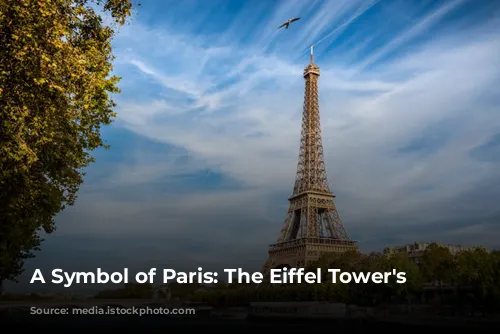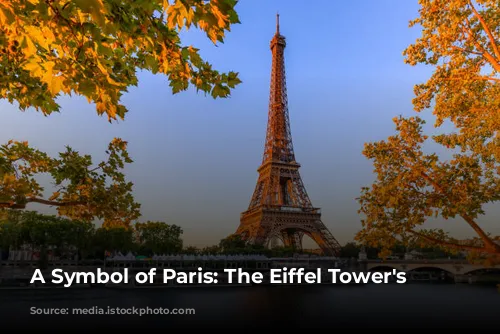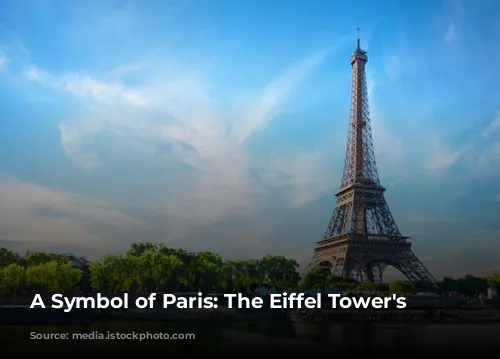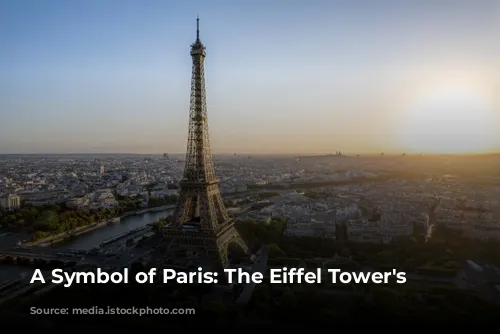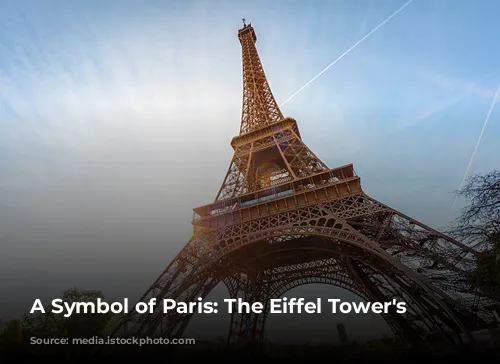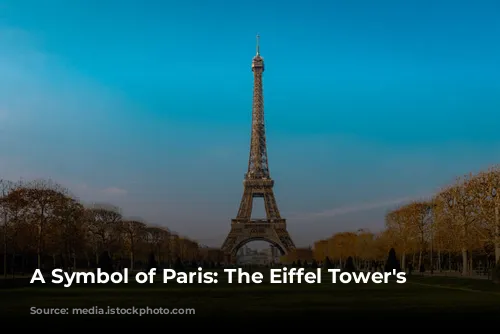The Eiffel Tower, a breathtaking marvel of engineering, stands tall as a testament to human ingenuity and artistry. This iconic structure, once the tallest building in the world, has become synonymous with the City of Lights, captivating the hearts of millions with its undeniable charm and grandeur.
A Monument to Progress
The Eiffel Tower’s journey began with a competition held in 1886 to design a centerpiece for the World Exhibition. The organizers envisioned a towering structure, approximately 1,000 feet tall, and Gustave Eiffel, a renowned engineer known for his revolutionary bridge-building techniques, emerged as the winner. His design, inspired by the work of his engineers Maurice Koechlin and Emile Nouguier, incorporated a wrought-iron lattice structure with a mathematically calculated curvature to minimize the impact of wind forces.
Construction commenced in January 1887, and within two short years, the tower was complete, ready for the grand opening of the World Exhibition on May 5, 1889. This remarkable feat was achieved through meticulous planning and the utilization of innovative techniques. The tower’s 18,000 metal pieces were prefabricated in Eiffel’s factory, assembled with over 2.5 million rivets, and carefully installed on a sturdy foundation built below the Seine River.
From Threatened Demolition to Icon
The Eiffel Tower’s fate hung in the balance, as its demolition was initially planned just twenty years after the exhibition. However, Eiffel, recognizing the tower’s potential, cleverly promoted its scientific value, securing its future. The tower transformed into a laboratory, housing an array of instruments for scientific research, including barometers, anemometers, and gravity measuring devices.
But it was the tower’s use as a wireless transmitter that ultimately saved it from destruction. First used for telegraphy in 1898, the Eiffel Tower later became a crucial hub for experimental wireless transmissions for military purposes. A permanent underground radio center was established near the tower in 1914, cementing its role in communication technology. The tower continued to evolve, with the addition of a television antenna in 1957, solidifying its status as a vital communications tower.
A Tower that Continues to Grow
The Eiffel Tower has witnessed significant changes in its height over the years. Originally reaching 312 meters, including a flagpole, the tower’s height has increased several times due to the addition of antennae for wireless transmissions. The latest update in 2022, with the installation of a digital antenna, brought the tower’s height to an impressive 330 meters.
The tower’s color has also undergone a transformation, reflecting its evolution. Initially painted a reddish-brown hue to protect its iron structure from rust and pollution, the Eiffel Tower has donned a variety of shades over time. In 1892, it was painted ocher, followed by yellow-orange in 1899, yellow-brown in 1907, and brownish-red in 1954. In 1968, the iconic “Eiffel Tower brown” was adopted, creating a harmonious blend with the Parisian landscape. This bronze tint, applied in three shades from dark at the base to lighter at the top, remains the tower’s signature hue.
A Sparkling Icon of Light
The Eiffel Tower’s nighttime spectacle is truly breathtaking. Illuminated with a dazzling display of golden LED lights, the tower sparkles like a celestial jewel against the Parisian sky. A beacon atop the tower sends out two blue light beams, adding to the mesmerizing display.
The tradition of lighting the Eiffel Tower dates back to its inauguration, when 10,000 gas lamps adorned its structure. Over the years, temporary lighting installations have graced the tower, celebrating milestones such as the new millennium and Europe Day. The current nightly display of twinkling lights, introduced in 2003 after the success of the millennium celebrations, continues to captivate the world.
A Timeless Legacy
The Eiffel Tower’s iconic design has inspired countless imitations worldwide. From the 333-meter-tall Tokyo Tower, inspired by the original, to replicas like the 1:2 scale tower in Las Vegas, the Eiffel Tower’s influence is undeniable. Two 1:3 scale towers stand in China, one in Shenzhen and another near Hangzhou, while Pakistan boasts two 1:4 scale replicas in Lahore and Karachi. Even France has its own copycat: the small town of Chambretaud houses a 1:10 scale replica aptly named “Eyffela.”
Despite its global influence, the Eiffel Tower remains a unique masterpiece, a testament to the ingenuity and artistry of its creators. Its enduring popularity draws millions of visitors each year, captivated by its architectural grandeur, historical significance, and breathtaking views of the City of Lights.
Exploring the Eiffel Tower: A Journey to the Top
Reaching the Eiffel Tower is a breeze, with convenient access via the M8 metro line. Exiting at the École Militaire station, a short walk leads to the Champ de Mars, the park where the tower stands. Alternatively, the Bir-Hakeim station (M6) provides closer access, although without the picturesque views of the park.
Once you arrive, you can enjoy the free esplanade under the Eiffel Tower, although security measures have transformed the experience. A security check is now required to access the esplanade and surrounding gardens. However, exploring this area is free; only entry to the tower itself requires a ticket.
The Eiffel Tower offers three floors, each with its own unique attractions. The first floor, at a height of 57 meters, features a glass floor, restaurants, and shops. You can reach this level by climbing about 300 steps or taking the elevator. The second floor, at 115 meters, provides stunning views of Paris, with additional restaurants and shops. It can be accessed by elevator or by climbing 674 steps, allowing for a break on the first floor.
A glass-walled elevator from the second floor takes you to the third and top floor, at a height of 276 meters, offering panoramic views of the region. This floor features two levels, one outdoor and one indoor. Here, you can even visit Gustave Eiffel’s restored office, where he once had to climb 1665 steps to reach his workspace. Today, the staircase between the second and top floors is closed, requiring the elevator for access.
